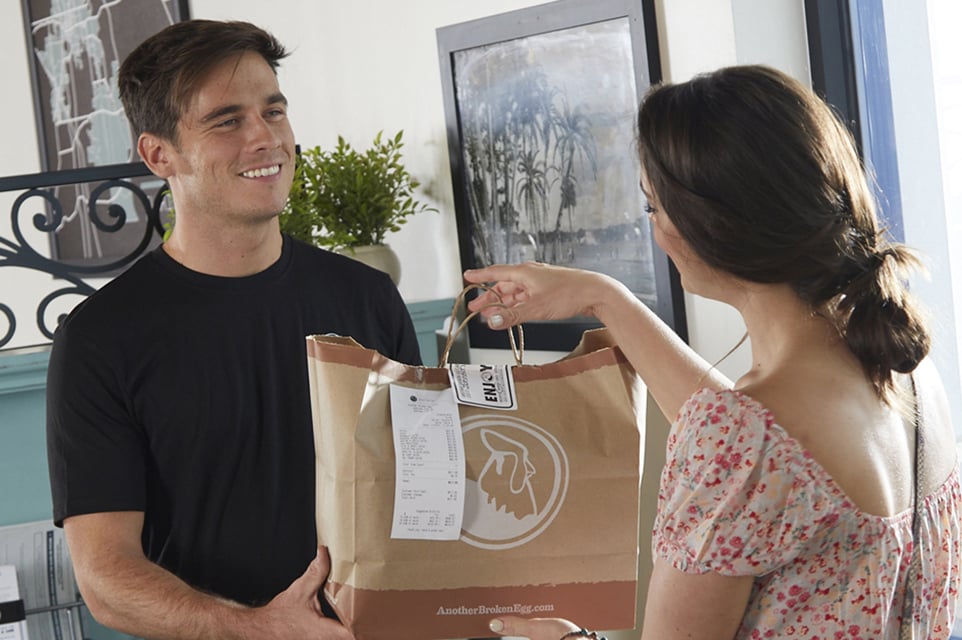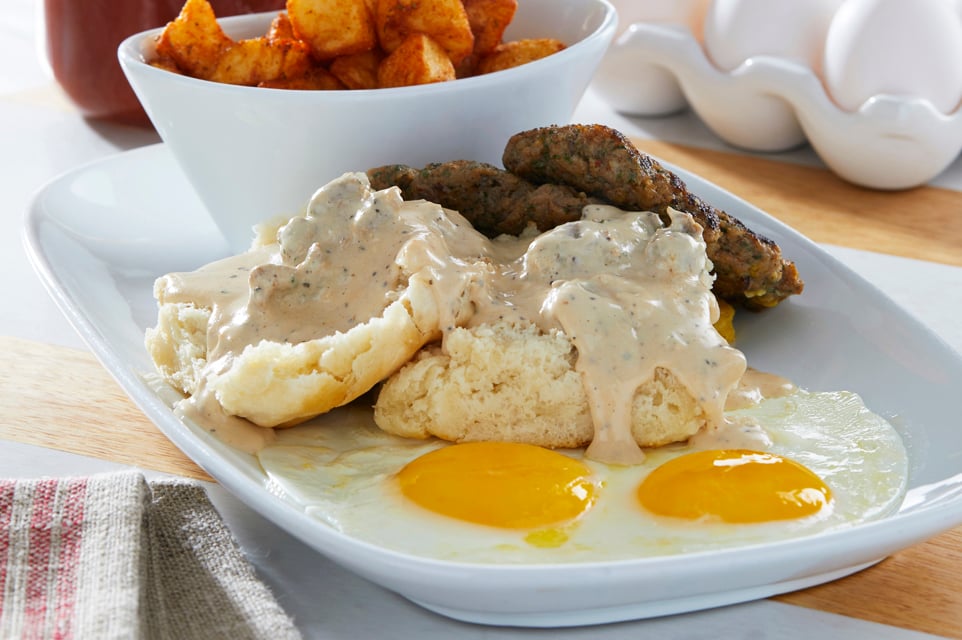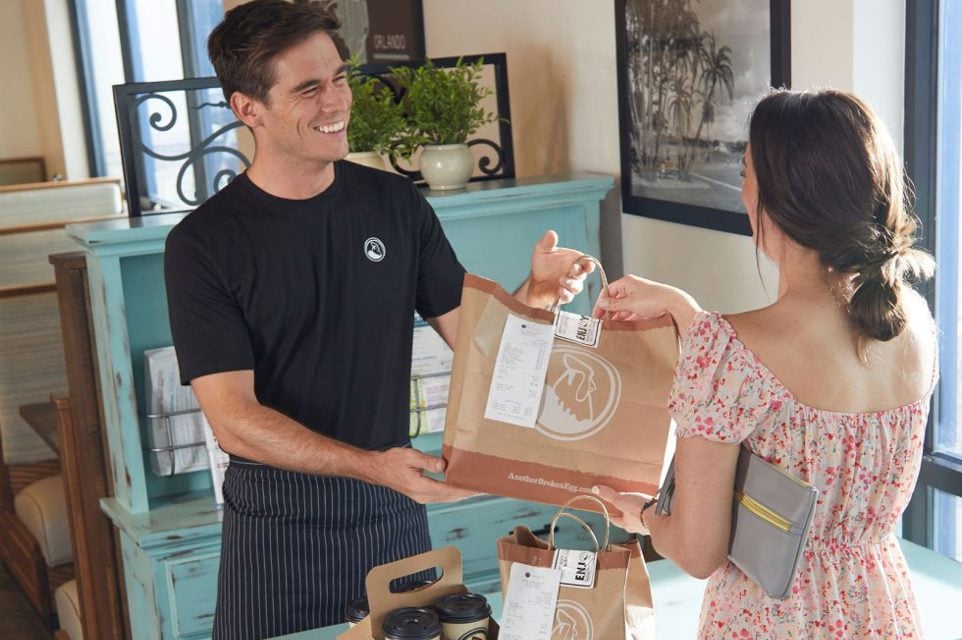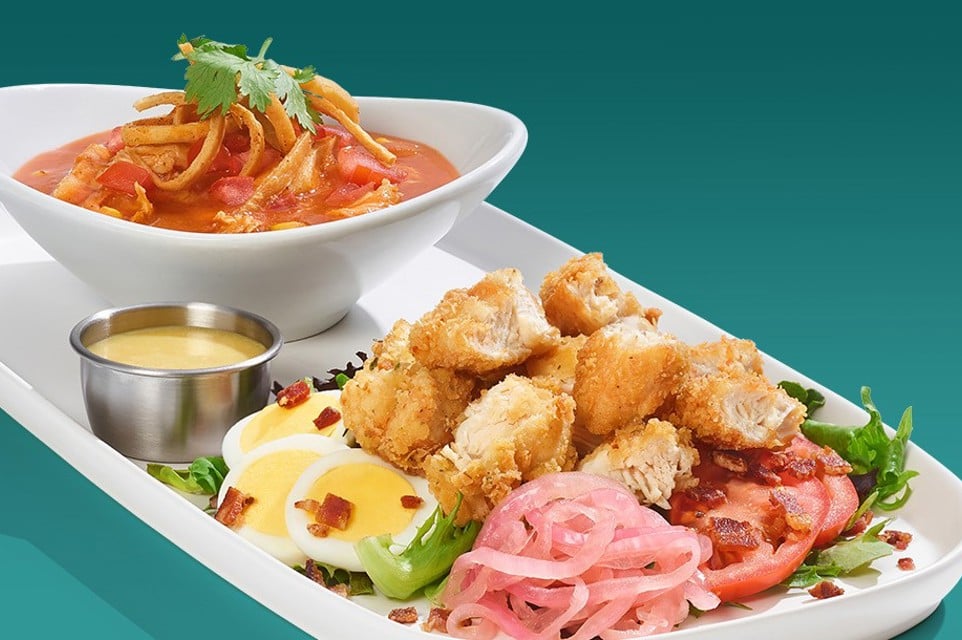Delivering Premium Breakfast at Another Broken Egg Cafe

Another Broken Egg Cafe, like a lot of upscale experiential brands, was caught flat-footed by the pandemic. Its new CEO Paul Macaluso joined in 2019, just in time for a panicked race to figure out delivery for the 92 locations as the packed dining rooms emptied.
“Revamp is a good word; there was nothing there. I was at McAlister’s previously, we launched online ordering five years earlier and I did it at Krystal before this. But we had to get it off the ground,” said Macaluso. “We reached out to Olo, launched that in 30 days. We were all shut down so we had nothing else to work on—it was survival. We launched right away with a couple third-party companies, now we have four or five.”
Prior to all that work, the thought of ordering a delicate eggs Benedict or a boozy breakfast cocktail for delivery may have sounded like a fool’s errand, but Macaluso said the team figured it out and, today, off-premises accounts for 15 percent of sales. That’s a dramatic increase from the small mix of catering and to-go ordered that accounted for 2 percent of sales back in 2019.
He said the brand bounced back quickly after an aggressive push to update off-premises systems and processes. Last year, same store sales rose 24 percent compared to 2019. This year is up double digits again, though recent inflation worries and comparing against a very good year keep the growth in the lower double digits.
Off-premises, however, has remained steady even as dining rooms return to full capacity and the occasional very long wait times, especially on the weekends. Macaluso said he’s consistently interested in the delivery customer. Even in this shaky macro environment, they’re not slowing down.
“It hasn’t diminished, which is so interesting; they’re paying additional fees. They can order and pick up, but the majority are ordering delivery. That’s been a little bit of surprise, it hasn’t increased dramatically but hasn’t decreased either,” said Macaluso.
While the use case continues to be a head-scratcher for him, it seems to be working well even post pandemic. He credits three things with making the off-premises experience as premium as consumers expect from the brand: technology, quality packaging and smarter operations.
Technology
Updating the technology stack in the restaurant was essential to getting off-premises right. The brand went so far as switching points of sale to get everything working well. Macaluso said the brand moved to Revel, calling out the necessity of an open API to plug in all the modern tools necessary to get on- and off-premises operations flowing seamlessly.
Getting online and platform orders flowing into the kitchen was just one aspect, but given how busy dining rooms are, he said it’s an important to see exactly what’s going on. He moved to Wisely, now part of Olo, for a waitlist so the system can see everything coming through.
“It also understands how many online orders are coming into the cafe. Some of our cafes do 20 percent of sales off premises. We now have a more holistic view of all the things that are hitting the kitchen. It’s basically taken us two years to get that all sorted out,” said Macaluso, noting the last restaurant was updated in April.
Operations
That brand’s new technology stack allows for better operations, especially connecting with guests.
“We can see this person has come four times in the last year, one though DoorDash and three in-person visits,” said Macaluso. “But then it’s how do you operationalize it?”
The team is just starting to do some of that, but already he can see if someone had a bad experience last time via a Wisely survey. The staff can give them a little treat and thank them for giving the restaurant another shot. If a customer always gets the special of the week, the staff can highlight the current limited time offers (LTOs) or tease some of the new LTOs coming up soon to entice another visit.
On the delivery side, Macaluso said maintaining a premium level of service meant keeping a close watch on delivery platform capacity. He said some markets were turned off on various platforms that we’re having issues or couldn’t guarantee a certain level of service.
“There are a couple key metrics: delivery times—how long does it take to show up—the other one is acceptance rate. Sometimes they’ll reject an order because they don’t have enough drivers,” said Macaluso.
That’s especially important because customers don’t always understand who’s doing what. If an order gets rejected, the customer has tended to blame the restaurant, so they have an upset customer, wasted food and packaging.
Packaging
Macaluso said the company invested in high-quality packaging for food and beverages and, it better communicates the quality of the brand.
“You have to have really good packaging; we’re a premium brand, so we can invest in packaging. We have a lot of Benedicts. If you put a poached egg on something it’s going to keep cooking, by the time it gets to you it’s fully cooked,” said Macaluso. “We have our eggs in a separate container, it’s in the same box but it’s in a secondary container.”
Similarly, the company packages all the toppings for pancakes, waffles and French toast in a separate container so nothing melts and customers can assemble it themselves.
As for beverages, he said 49 percent of locations can deliver alcohol, and a push for boozier brunches has clicked with customers. Fountain drink cups or basic packaging wouldn’t carry the premium branding, so the company sourced what Macaluso calls “adult Capri-Sun” pouches for delivery beverages. More than 10 percent of off-premises orders include at least one alcoholic beverage, a very nice margin boost and the boozy punctuation on a premium breakfast delivery experience.
Read the Article at: www.foodondemandnews.com





